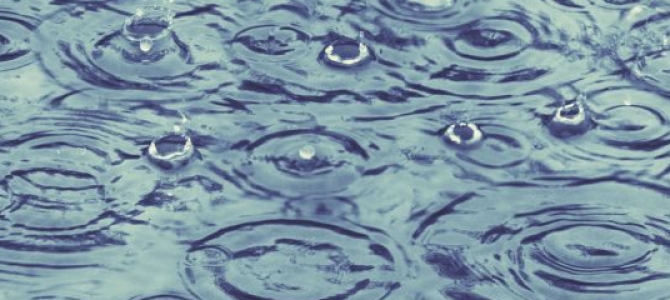 Shopping Cart
Shopping Cart
01 March 2024
How Average Rainfall Patterns Are Changing Across the Globe and What It Means for Water Efficiency

All around the world, including right here in New Zealand, it's starting to rain more. Whilst you might think that's a good thing, it can actually cause a lot of problems. Too much rain can wash away soil, harm plants and animals, and even damage our towns and cities.
The funny thing is, even though we're seeing more rain, that doesn't always mean we have more water to use. That's because we need to catch, clean, and store the rainwater before we can use it. If it rains too much too quickly, we can't always do that. So while it's raining more, we're also needing to think more cleverly about how to use our water.
And despite the seemingly paradoxical rise in rainfall figures, many regions around the globe are still experiencing severe droughts and heatwaves. This can be attributed to changing weather patterns driven by global climate change. While some areas are inundated with increased rain, other regions are becoming drier due to shifting atmospheric circulation patterns and changes in sea surface temperatures.
Heatwaves are becoming more frequent and intense in these areas, exacerbating water scarcity issues. Droughts, in turn, are increasingly severe due to higher temperatures and altered precipitation patterns that result in less frequent but heavier rainfall events. Consequently, the rain that does fall often quickly runs off rather than seeping into the ground to replenish groundwater reserves, leaving these areas parched despite the global surge in rainfall.
Climate Change and Rainfall Trends
Global warming, a primary driver of climate change, is intensifying weather patterns, leading to more rainfall in some regions and less in others. The mechanism underlying these changes lies in the basic principle that warmer air holds more moisture. As global temperatures rise due to the increasing concentration of greenhouse gases, the atmosphere's capacity to carry moisture increases, intensifying the hydrological cycle. This results in heavier and more frequent rainfalls in certain regions.
Conversely, in other parts of the world, global warming is contributing to a decrease in rainfall. The increased evaporation due to warmer temperatures can lead to drier conditions, tipping the balance of the hydrological cycle and often resulting in prolonged droughts. Moreover, shifting atmospheric circulation patterns, such as changes in the course of the jet stream, can cause persistent high-pressure systems that block rain-bearing clouds, leading to dry conditions in certain regions.
These patterns illustrate the complex and often counterintuitive impacts of global warming on regional weather patterns. While it might seem logical to assume that more global warming would lead to more global rainfall, the reality is a far more complex interplay of climatic factors, leading to an increase in extreme weather events, be they droughts or floods. It reinforces the necessity for comprehensive, global strategies to mitigate the impacts of climate change, as its effects are far-reaching and intrinsically linked to our planet's most vital resource - water.
Why Water Efficiency Is Important
Water efficiency is crucial for several reasons, each interconnected and pivotal for the preservation of the environment and our planet's ecosystems. Firstly, it directly contributes to a healthier environment. Efficient use of water reduces the need for water treatment and pumping facilities, which typically rely on fossil fuels for power. Thus, by conserving water, we simultaneously decrease our carbon footprint and contribute to a reduction in global warming.
Secondly, stronger ecosystems depend on our ability to utilise water efficiently. High water consumption often depletes natural habitats and puts stress on local flora and fauna, leading to biodiversity loss. By using water responsibly, we can help preserve these ecosystems, allowing them to continue providing us with oxygen, food, and other critical resources.
Last but not least, water efficiency stands as a cornerstone for more cost-effective energy solutions. Treating and delivering clean water is an energy-intensive process. By reducing water usage, we decrease the demand for these services and, as a result, lower energy consumption. This can lead to significant cost savings, particularly in areas where both water and energy are scarce.
In essence, water efficiency plays a key role in our journey towards a more sustainable and resilient world. It's an area where each of us, as individuals and collectively, can make a significant difference.
How to Conserve Water
Water conservation can be as simple as modifying habits or as involved as upgrading to high-efficiency appliances. Here are some practical measures you can undertake:
Use Low-Flow Plumbing Fixtures: Low-flow fixtures, such as tap aerators, high-efficiency showerheads, and dual-flush toilets, can reduce water consumption significantly. For instance, a low-flow showerhead can save up to 15,000 litres per person per year. They are relatively simple to install, cost-effective in the long run, and do not compromise the comfort of your daily routines.
Collect Rainwater: Rainwater harvesting is a simple yet effective way to conserve water. Collected rainwater can be used to water plants, clean cars, and even flush toilets. Not only does it reduce your reliance on treated tap water, but it also prevents stormwater from overflowing into rivers and seas, which can upset delicate aquatic ecosystems.
Use Greywater Systems: Greywater is lightly used water from your bathroom sinks, showers, tubs, and washing machines. It can be reused in your home for tasks like flushing toilets and watering gardens, reducing your overall freshwater usage. It's important to note, however, that greywater use should comply with local regulations and safety guidelines.
By implementing these measures, each household can contribute greatly to overall water conservation efforts. Remember, every drop saved counts towards a more sustainable future.
Rainwater harvesting in New Zealand and around the world
Rainwater harvesting has been steadily gaining attention in New Zealand and around the globe as a viable and sustainable means of water management. The concept itself is not new, with traditional rainwater harvesting systems prevalent in many cultures worldwide, yet its modern implementation signifies a conscious shift towards sustainable living.
In New Zealand, a country with abundant rainfall yet increasingly strained water resources, rainwater harvesting has become an integral part of the water resource strategy. Driven by droughts, climate change, and escalating water costs, many Kiwis are embracing rainwater tanks to supplement their water supply and reduce their reliance on the municipal water system.
Smart Water is playing a pivotal role in this movement through our innovative water tank level indicator technology. Our system allows homeowners to monitor the water level in their tanks, optimising usage and preventing unexpectedly running out of water. Additionally, the technology can provide data to assist with monitoring consumption patterns and identifying any potential leaks or issues with the system. This smart technology not only adds a layer of convenience to the process of rainwater harvesting but also enhances the efficiency and effectiveness of water management.
As we grapple with the challenges of climate change and increased water scarcity, the rise of rainwater harvesting and the role of companies like Smart Water are likely to become increasingly important in promoting water conservation and sustainable living.
Making Smart Choices for Water Efficiency
In order to attain long-term water efficiency, we need to blend simple lifestyle adjustments with technological innovations. The key to success lies in our everyday choices.
Becoming Conscious Consumers: Our daily activities, from showering to washing dishes, can be optimised to conserve water. For instance, turning off the tap while brushing our teeth or scrubbing the dishes can save several litres of water per day.
Smart Landscaping: Choose native plants and shrubs that require less water and are more resistant to local pests and diseases. Integrating mulch into your garden can also prevent water evaporation, thus reducing the need for frequent watering.
Investing in Water-Efficient Appliances: Appliances such as dishwashers and washing machines consume large quantities of water. Opting for high-efficiency models, although more expensive initially, can lead to significant water and energy savings in the long run.
Smart Irrigation Systems: Technological advancements have led to the development of intelligent irrigation systems. These systems use real-time weather data to adjust watering schedules and volumes, ensuring optimal water use and minimising wastage.
By adopting these simple changes and investing in water-efficient technology, we can make a significant contribution to water conservation. The impact of these choices, both individually and collectively, will pave the way for a water-efficient and sustainable future.
The Future of Rainfall Patterns
Climate change is projected to have a significant impact on rainfall patterns across the globe. According to the Intergovernmental Panel on Climate Change, an increase in global temperatures could lead to alterations in the hydrological cycle, manifesting in varied precipitation patterns.
In areas prone to heavy rainfall, climate change could likely exacerbate this pattern, leading to increased instances of flooding. For instance, the United Kingdom is projected to experience heavier and more frequent periods of rainfall, particularly during winter months, posing risks to urban infrastructure and agriculture.
Conversely, regions which currently experience lower levels of rainfall are projected to become even drier, resulting in more frequent and severe periods of drought. This is particularly concerning for areas such as the Mediterranean and Southern Africa, where water scarcity is already a pressing issue.
Moreover, the predictability of monsoon seasons, crucial for agriculture in many developing countries, may be affected. Unpredictable shifts in the timing, intensity, and duration of these rain periods can have profound impacts on crop yields, food security, and local economies.
In conclusion, climate change is set to significantly alter rainfall patterns worldwide, posing new challenges in water management. It reinforces the need for us to adapt and develop sustainable practices and technologies to mitigate these impacts and ensure water security for future generations.
Frequently Asked Questions
How is climate change affecting global rainfall patterns?
Climate change is intensifying weather extremes, causing some regions to experience heavier and more frequent rainfall while others face prolonged droughts. Warmer air holds more moisture, which can lead to intense downpours, while altered atmospheric circulation and higher evaporation rates contribute to drier conditions in certain areas.
Why is water efficiency becoming increasingly important worldwide?
Water efficiency is crucial for environmental sustainability, ecosystem preservation, and energy conservation. Using water efficiently reduces the demand for energy-intensive water treatment and distribution, helps maintain natural habitats, and supports resilience against water scarcity caused by shifting rainfall patterns and climate change.
What are some effective strategies for conserving water in response to changing rainfall patterns?
Effective strategies include implementing low-flow plumbing fixtures, rainwater harvesting, greywater reuse, smart irrigation systems, and planting drought-resistant vegetation. These measures reduce water wastage, mitigate the impact of floods or droughts, and enhance long-term water management and sustainability.
